Through the insufferable boil of rolling dust I looked up and spotted daughter Melanie. She had showed up in our badly warped game of leapfrogging our way on foot down remote forested roads and had mustered all the strength she had to continue the struggle about 20 feet down the steep slope. She knew enough not to be directly under me; the rolling rocks and logs and debris from my own efforts would potentially whack her. I stopped for a second to watch her.
She appeared an indefatigable human rototiller. In the 95-degree heat, her face no longer glistened from sweat; instead, wet had become a magnet for a thick coating of plant debris and dust. Sinewy muscles strained and pulsed in the work at the end of the hoe mattock. I noted that her arms and legs were badly bruised and would be black and blue after today. After 8 straight hours on the hoe, she was still going strong, although I could see the fatigue and the strain in her face.
I knew she was exhausted. We had to quit. It was 7 PM, and we had been in the backcountry mountain peaks all day, hiking a total of more 12 miles in our foray against invaders, but we weren’t quite done.
I set back to work on my own version of warfare. I was armed with a gas-powered weed trimmer, packing two of the thickest and strongest cords I could buy. It shot dust, dirt, rocks, and plant fragments up to 20 feet away. A cloud of volcanic dust rose in my wake. Running the tool without safety glasses was unthinkable. Plant debris erupting from basal rosettes of targeted plant species shot skyward, and coated any and all exposed skin. Hands and face burned with the combination of sticky plant resin and sweat; the back of my hands were bleeding from I didn’t even know what.
The cordage whipped around its latest pile of rocks, and buzz went to whirring. After an entire day, the last of the trim line had run out, and I shut it down for the last time that day. I looked in front of Melanie, still rolling, clinking, smashing, clanking against outcrops of bedrock in a fierce attempt to win for once and for all. I couldn’t quit now. I pulled out my 5-inch Buck knife, knelt in the rock and dirt, and began cutting the aberrants off at the basal rosette, below all leaves—at the guts of the plant—the growing point.
Terminating. Killing them all.
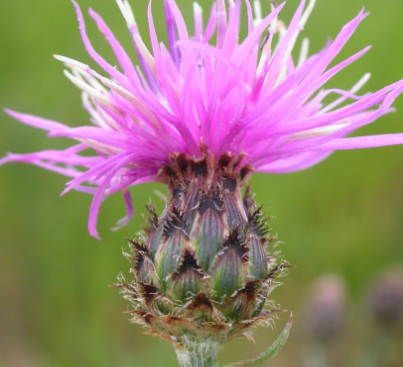
The beauty…and the beast.
Melanie met me, and stood crookedly erect, leaning on her heavy grub-hoe. It was like a 5 pound pickaxe with a broad mattock head. Its non-ergonomic style looked like that of a stone-age tool, fashioned by metallurgists of bronze-age vintage. It looked as if it was designed to be wielded by a huge John Henry-esque man, not this sinewy woman.
But I personally doubt that John Henry had the tenacity she had.
“How much further?”, she rasped out between deep breaths.
“Turn around.”
She did.
“See that barbed wire fence?” It was only five feet from her back.
She nodded, and a track of sweat cut a new trail through the dust on her cheek.
“That’s the end. It’s our grazing allotment boundary.” Seventy square miles of rugged and wild country that we used for summer pasture stopped there at the barbed wire boundary. Beyond it, someone else ran cattle there. Where we stood, we alone had grazing rights.
She turned back again, to the fence. Gazing at not the fence, but the ground—the steep mountainside beyond it. And I knew immediately what her weary but highly tuned eyes were perceiving.
“No. We don’t have to get them.”
She slowly turned back to me, and through the dirt and dust caked on her cheeks, she cracked a slowly widening grin. I knew what she was thinking: “Those bastards can stay right there.“
The illegitimate spawn she was referring to was a species of plant, very subtle, mixed in with the abundant and diverse ground cover. That one species of plant was nearly impossible to ferret out visually by a casual observer in the plethora of types on the mountainside. But to the trained eye, the subtle became a serious pursuit. It’s weirdly satisfying to pick out one plant from thousands at a glance. One aberrant species on a mountainside, but the human mind can do it, once practiced.
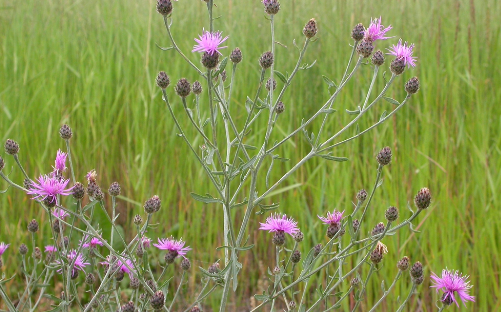
Bees love the flowers. There are honey connoisseurs who can identify knapweed honey with a few drops on their tongues. It’s good, they say. But not as good as wildflower honey. Diversity makes all the difference, and weeds like knapweed can remove a lot of natural diversity.
But for you, dear reader, who don’t live a life of plant pursuits, the name will have to do. In common plant lexicon, it was the spotted knapweed. In science, it is Centaurea stoebe. As in centaur. Fierce adversary.
Like nearly every immigrant to the new world, this adversary came on board a ship that arrived in the port of Vancouver, British Columbia somewhere around 1883. Which ship is not certain. But it is thought that seeds first arrived in burlap sacks of alfalfa from the European or Asian continent, where knapweed grows in the wild at endemic levels, controlled by natural predatory insects and disease.
But the piggyback seed came free of those control agents. Free passage to the new world, with a ticket written by alfalfa. And the lust for alfalfa generated by a burgeoning and highly competitive dairy industry in the newfound agricultural powerhouse of the Lower Fraser river valley was insatiable.
Alfalfa hit the ground running, making for high quality dairy hay in the westernmost outpost of humanity in the British colony of Canada.
But knapweed hit the ground sprinting. After just 100 years, the invasive knapweed had made a noxious weed toehold in every state in the US. It can cover all, and even control other plants through its own personal arsenal of plant toxic chemical secretions into its host soils that create adversity for nearly every plant, except itself and any of its own species.
Much of our Western landscapes are still fairly intact, with plant communities similar to those found when the first settlers came. Eastern landscapes saw invaders first, simply because the first immigrants to the New World arrived on the Eastern seaboard. The other difference between most Eastern and Western ecotypes is precipitation. In the East, it is rarely limiting. Broadleaved plants common in Eastern habitats easily dominate when the limiting factor is often sunlight. In the West, water is usually limiting, and plants are more easily set back by invasive ones because their need for moisture can become critical with competition, especially since many invasives have no natural predators.
Because of this, westerners fight with a greater ferociousness than their land management counterparts in the East. Weeds more easily get the upper hand.
Enter us on the Hat Creek Ranges. Knapweed has a foothold here, where we graze cattle. The incursion areas are very finite, as the vectors into the largely native habitats of Hat Creek are old and often abandoned logging roads—used by off road vehicles. Volcanic mud is sticky, it just so happens. And when there is seed on the road, tires can grab it, thereby dropping it like efficient Johnny Appleseeds across all roads and jeep trails in the West.
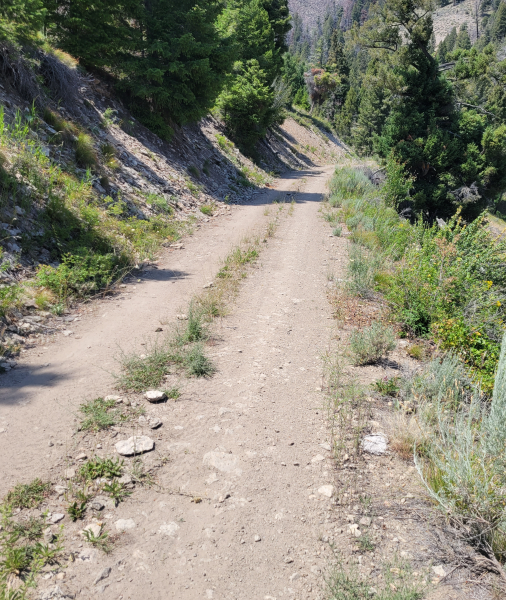
Much of the stuff down the middle of the road in the hardest rock…is knapweed.
Obviously, weeds are bad news. They replace native plants. They dominate, since nothing eats them.
The government management agencies around us all get this. It is plain truth, as evidenced by the very hills in the backyards of their own offices.
It’s why they embark on a chemical warfare against weeds. Every year, the federal government spreads chemicals on millions of acres of public lands to reduce weed populations.
What about on Alderspring? No chemicals. None. Interested federal managers have agreed to let us try to deal with them our own ways to allow us to maintain our organic certification (and to provide you with clean, chemical free food). And so far, we have proved up by using methods like hard physical labor. We’ve even invested, with the help of our federal partners by releasing insects imported from the weed’s own native locales on the other side of the planet, brought here to help us with plant predation on the plant they know and love.
And it’s working. Weed populations are on the down-turn.
It’s quite satisfying. Sure, you wake up the next day thinking you got in a fight the day before, but knowing that native plants and animals will persist on intact habitats really does make it worth it.
Especially when the blood on your hands stops leaking out, and the plant sticky sweat is washed away, and blacks and blues fade. Knowing that you made a difference. A needle moved.
That’s hope. It changes everything.
Happy Trails.
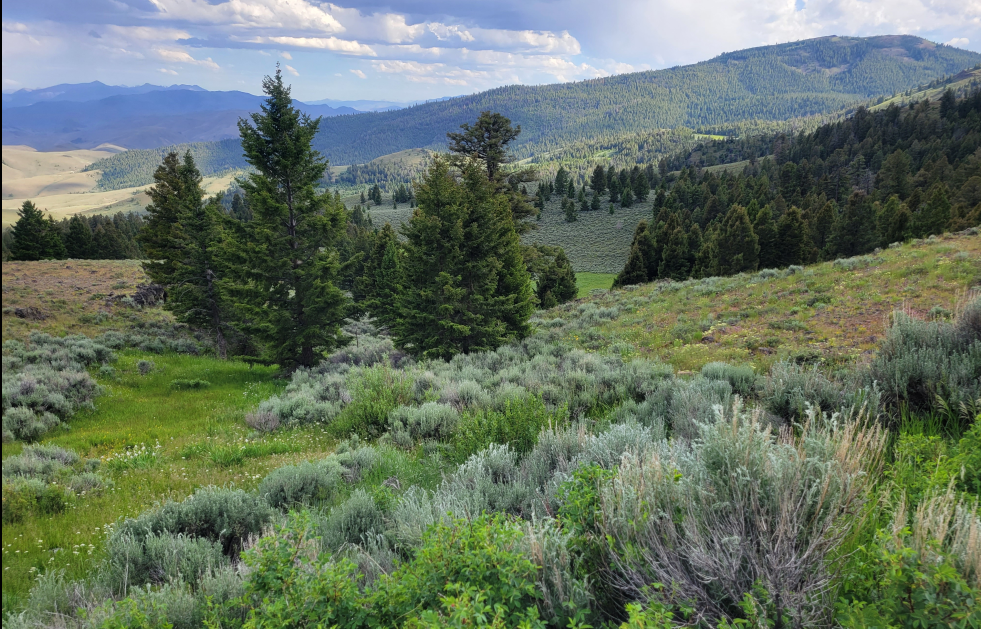
It’s the upper little hat country. After years of grubbing, we guess that there is less than 25 knapweed plants in all the country in the picture, and most of them along roads. We’ll get them. If we don’t this year, we’ll get them next year.

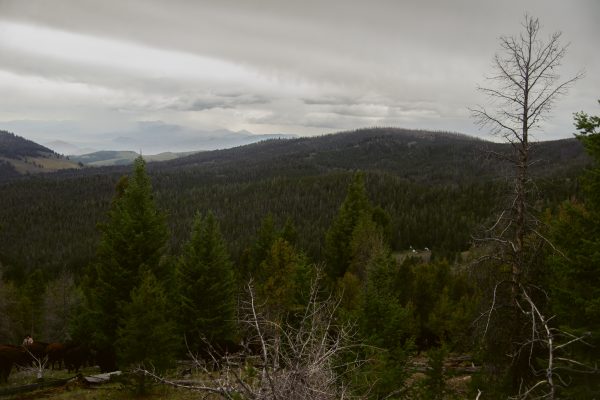
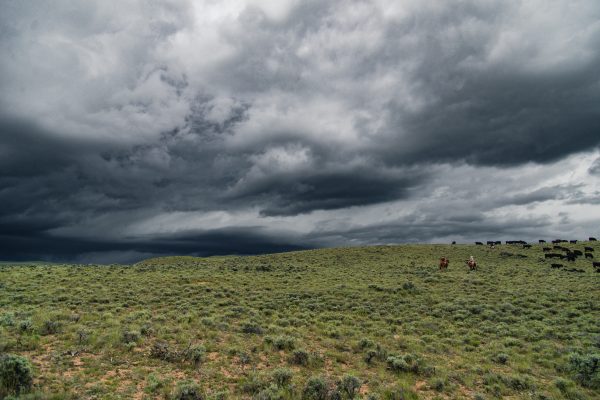


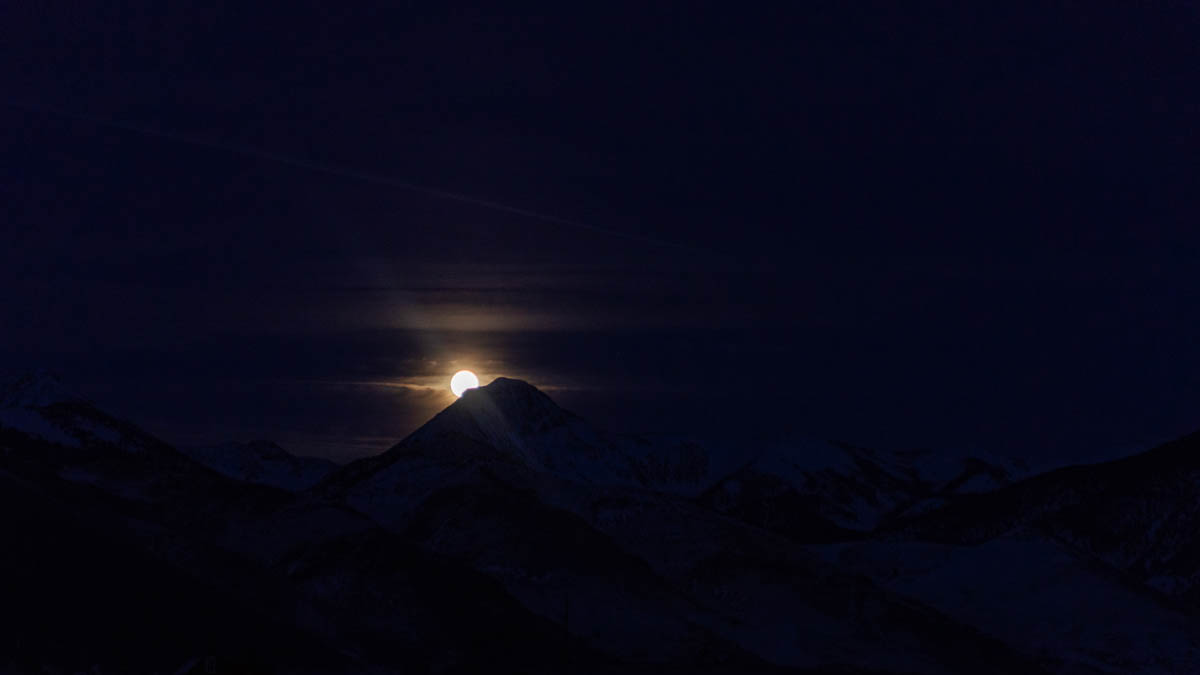
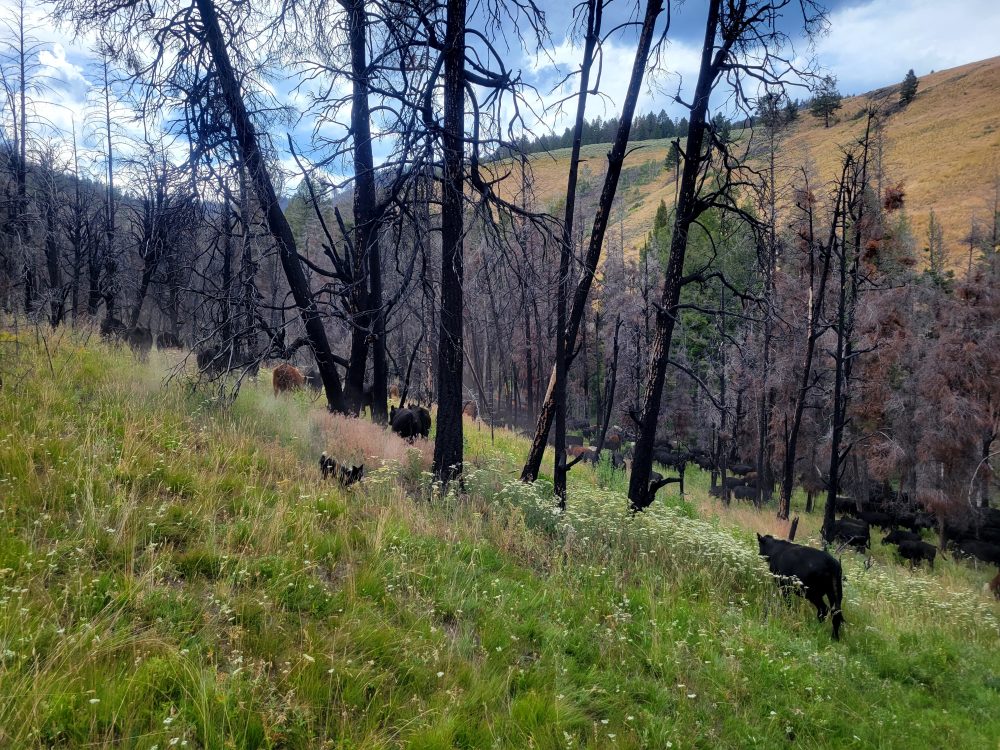
Shirley
You never cease to amaze me at how hard you and your girls (and crew) work! There’s only one thing that must keep you going with such hard work and long hours – the satisfaction of being a good caretaker of the land and animals, and working WITH not against Mother Nature…as her partnerâ£ï¸
Leslie Conner-maiyo
I’m always at war with knap weed, whether it’s on a hiking trail in the bitterroots or in my backyard. It is not allowed to survive to the best of my ability which is starting to wane as my age is gainig on my ability to bend over and pull it or chop it with a hoe!!! But I will never quit!
Caryl Elzinga
Leslie
So good to hear from you! I, too have a vendetta against such invaders! I often dream about them; they haunt me. The anti-knapweed bloods runs thick through my veins. They steal from us, and we need to take our lands back. i think eventually, the bugs will have the last say!!!
Take care and happy trails!
-Glenn
Caryl Elzinga
Shirley. Thanks so much for your kind words.
I think it’s really about doing the right thing. For all those pieces and parts of the system. It’s not just about grass or getting our cows fed. It’s about caring for all the life we’ve been entrusted with and doing no harm. And then: make the wrongs right. We sure aren’t perfect on all that; all we can do is try.
-glenn
Jeff Z
This week the title of the sermon I preached was:
“Why is it easier to grow weeds than food? Why is it easier to do wrong than do right?”
Question: what will keep in check the “insects imported from the weed’s own native locales”?
Caryl Elzinga
Ha! You nailed it, Jeff.
As with everything, there are no guarantees. USDA says they’ve evaluated these risks. But are they correct? I have no idea. So before embarking on said bugs, I, for one, will wait five years to see if there are threats to native. On the ground. I’m in touch with the weed and bio control gurus, so I hear the latest.
But it is scary. I totally validate your concerns! But there’s nothing else that works! Chems are only a SHORT term solution!
-Glenn